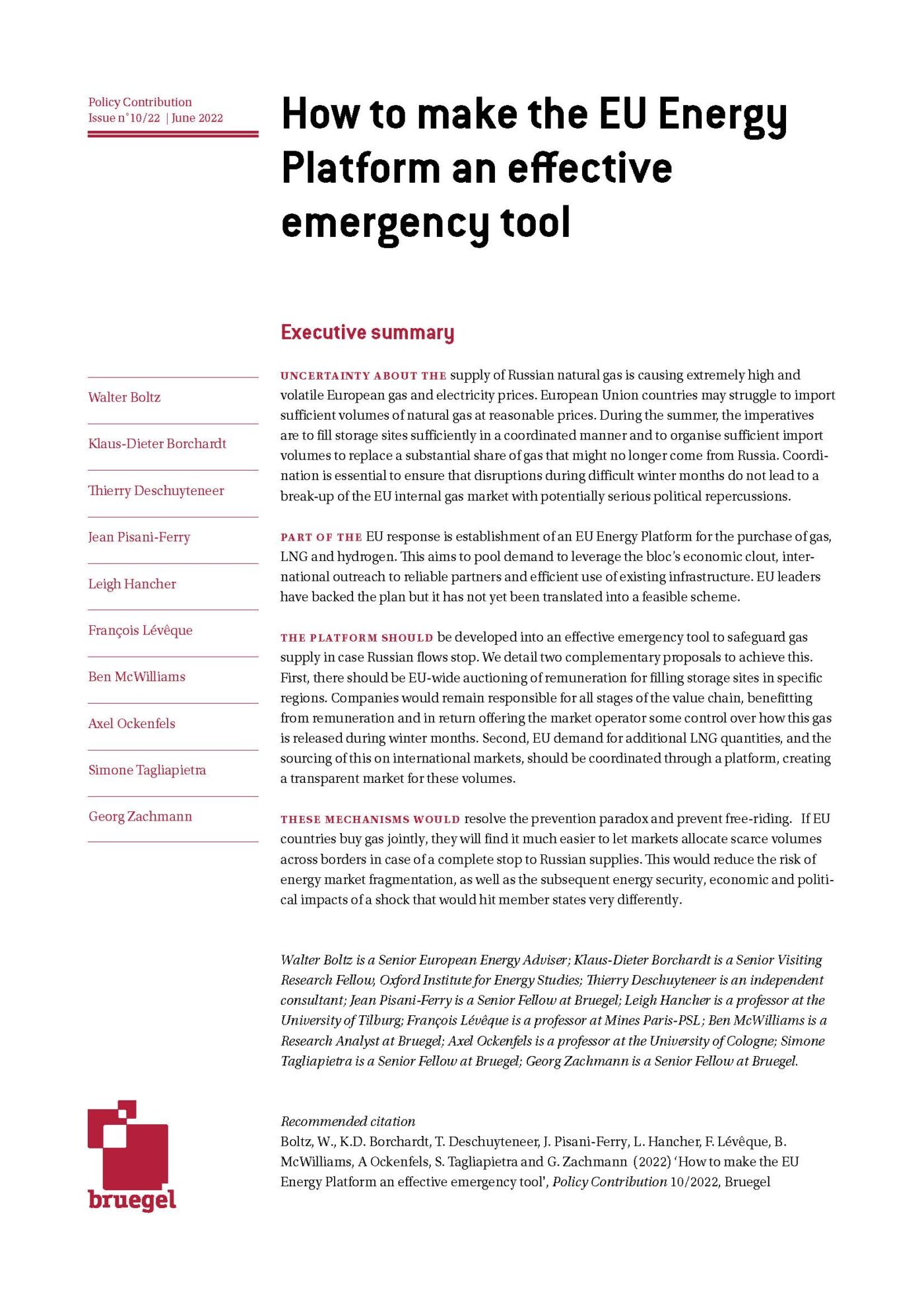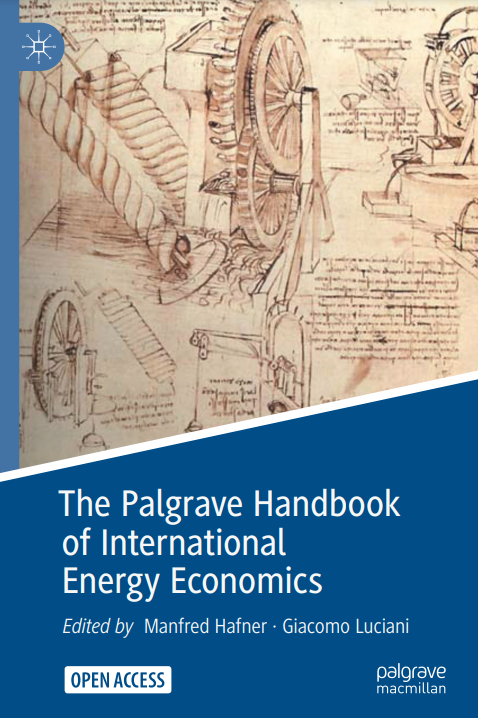Blog Post
Who is suffering most from rising inflation?
The lowest income households are suffering disproportionally from the current inflation increase, with rising energy prices the main culprit.
Inflation in the euro area reached 5% in December 2021, the highest level since the creation of the common currency. In some countries, the rise has been even more acute. In Belgium, inflation hit 6.5%. However, in Italy and France the rise has been more moderate reaching 3.9% and 3.4% respectively (Figure 1).
Rising inflation has mainly been driven by big increases in energy prices (electricity, gas and other fuels) since the start of 2021. The increase for energy was 23% in December 2021 compared to December 2020. But, similarly to headline inflation, the energy price rise faced by consumers has been very different across the euro area. Year-on-year growth for electricity, gas and other fuels reached 60% in Belgium, 33% in Italy, and ‘only’ 19% in France (Figure 2).
Rising prices have triggered demonstrations in many countries as vulnerable groups suffer from inflation and ask governments to adopt measures to shield them. In this context, it is crucial to understand who is affected most.
Inflation can have distributional effects for many reasons. Even if temporary, higher inflation usually weighs more on the poorest who lack savings to smooth their consumption over time. In addition, the savings they do have are often held in cash or in very low interest rate bank accounts that are not shielded from inflation (while richer segments of the population often hold stocks or inflation-linked bonds, for instance). The lower bargaining power of low-income/low-skilled workers can also lead to lower real wages if inflation outpaces pay rises.
Individuals may also face different inflation rates if their consumption patterns are different. For example, in the euro area in 2021, the prices of domestic flights increased by 8.4% but international flights by 3.7% only. The price of newspapers increased by 4.3%, while magazines only by 2.6%. Thus, the specific structure of a household’s consumption basket determines the inflation rate it faces. These differences in consumption patterns can determine whether low-income households face a higher inflation rate than high-income households.
Inflation is higher for low-income households
It is impossible with the usual inflation data to answer the question of which groups are most affected by inflation because national statistical institutes and Eurostat’s headline inflation numbers – using the Harmonized Index of Consumer Prices (HICP) – only track the price of the average consumer basket (based on total consumer expenditure). We therefore use Household Budget Surveys (HBS) – national-level surveys on consumer expenditure with information on households (income level, education level, age of person of reference, number of children, etc.) – to compute the inflation rates faced by individuals with different characteristics (see the Annex for more details on the HBS and our methodology).
For data availability reasons, we focus on three countries: Belgium, Italy and France, which are major euro-area economies that have faced different levels of both overall inflation and energy price growth. Belgium and Italy publish HBS results quite frequently (every two years and every year, respectively) and at a quite granular level. France unfortunately does not publish its results as frequently, but remains interesting given the different dynamics in inflation and energy prices (see annex).
In all three countries, the actual rate of inflation faced by the lowest income categories (lowest-earning fifth of households in Italy and France, lowest-earning quarter in Belgium) is currently higher than the rate of inflation of the highest income categories (Figure 3). However, the magnitude of this difference varies significantly. In December 2021, the inflation rates faced by low-income individuals were 1.4, 1.7 and 0.3 percentage points higher than that faced by high-income individuals in Belgium, Italy and France, respectively. Conversely, inflation experienced by low-income individuals was lower than that faced by high-income individuals in Italy and Belgium throughout 2020, while this was not the case in France.
Energy prices are driving the current surge in inflation inequality
Broadly speaking, inflation inequality (the fact that inflation is different for low- and high-income households) can evolve for two reasons. First, changes in the inflation rates of particular consumption goods can drive inflation inequality, given that these goods have different weights in the consumption baskets of different groups. Second, behavioural changes in reaction to rising prices might differ from one group to another. For instance, if low-income households have a harder time smoothing their consumption given rising energy prices, the relative importance of energy in total expenditure will rise faster for low-income households, increasing inflation inequality. This second dynamic is harder to capture with the data (given that imputed weights are updated every other year in Belgium and do not change over the period of analysis for France, because of the frequency of the HBS).
Specific goods increase inflation inequality if their inflation rates are positive and their relative importance is greater in the consumption basket of low-income households (or if their inflation rates are negative and their relative importance smaller). For example, if a given good represents 20% of total expenditure of low-income households and only 10% of total expenditure of high-income households, and its inflation rate is 10%, the good will increase inflation inequality by 1 percentage point (ie: (0.2-0.1)*0.1 = 0.01). If a good has the same weight for low- and high-earners, its inflation rate (however high) will have no impact on inflation inequality. We compute this effect for all goods, aggregate them across broad categories and report results in Figure 4.
Clearly, the recent surge in inflation inequality in Belgium and Italy has been driven mostly by the surge in energy prices. In France, where inflation inequality is much lower and has remained at around 0.3pp for the past three years, it is interesting to note that energy prices are nevertheless playing an increasingly large role in explaining differences in inflation rates at different income levels, suggesting that without the price increases in this sector, inflation inequality in France would be declining.
Part of these differences between France and Italy and Belgium can be explained by the lower volatility of energy prices in France (visible in Figure 2). This lower volatility results from the possibility for French households to opt for stickier regulated prices. This means French households are less affected by short-term energy price increases, but also that they benefit less from energy price reductions, such as happened in 2020 (when the actual inflation rate was lower for low-income households in Belgium and Italy). In addition to explaining why inflation inequality did not increase dramatically in 2021 in France, this explains why it was not reversed like in Belgium or Italy in 2020, when poorer households benefited more from declining energy prices (as can be seen in Figure 3).
The outsized role of energy in explaining growing inflation inequality in European countries is not so much driven by large differences in consumption, but by the staggering increase in gas and electricity prices for consumers, in particular in Belgium and Italy, meaning that a small difference in consumption shares can lead to large differences in inflation rates for different income levels.
The share of total household expenditure on energy is not very different for low-income and high-income households (Figure 5; the difference for house rentals is much higher in all countries). However, despite this, the growth rate of energy prices was so high in 2021 in Italy and even more in Belgium (consumer gas prices increased by 20% and 40%, respectively) that it has resulted in large increases in inflation inequality. Accordingly, the much lower growth rate of energy prices faced by households in France explains why inflation inequality is not rising there.
The actual effect would be amplified if low-income households are forced to increase the share of their total expenditure that goes to energy (given the lesser ability of low-income households to smooth consumption and the need to sacrifice other types of consumption to continue heating homes and driving cars). Such behavioural responses are quite likely and would mean that the rise in inflation inequality is underestimated. However, this is not visible in the metric that we use because, as with the HICP, we use weights from previous years and not contemporaneous weights (see annex), which could lead to minimising the inflation rate really felt by consumers (a problem we discussed in a previous blog post).
Conclusions and recommendations
Though inflation inequality is an important issue, the Household Budget Survey data, which enables us to compute inflation rates for different income groups, is too scarce. While some countries run the survey annually (or biennially) and publish granular data, most European countries do so only every five years, and often do not make precise data available (the granularity of the consumption goods reported enables a more precise computation of inflation rates for different income groups). Relying only on Eurostat’s harmonisation every five years makes it difficult to obtain a dynamic view of how behavioural changes are impacting real inflation across groups. Easy access to such data would be of great value to researchers, policymakers and central bankers, enabling a better understanding of the distributional effects of inflation.
Despite the lack of good data, our analysis suggests clearly that low-income households are suffering disproportionately from the current rise in inflation. The steep rise in energy prices explains this. European countries have introduced a variety of measures to try to shield consumers from the direct impact of rising energy prices. The differences in inflation inequality between France and Belgium suggest that the willingness, or ability, to achieve such goals varies significantly across countries. The French strategy to shield households appears to have had the intended effect, but measures since autumn have already cost a staggering €15.5 billion, and there has been mounting controversy about the obligation for EDF to sell electricity at a fixed price to its competitors (with an estimated cost of €8 billion for the company). If the spike in energy prices is only temporary, the French approach could be viable solution. But given that long-term rises in the prices of fossil fuels will be needed for decarbonisation, countries need to start thinking about more efficient measures to mitigate the future, potentially much more persistent, impact of rising energy prices on inflation inequality.
Recommended citation:
Claeys, G. and L. Guetta-Jeanrenaud (2022) ‘Who is suffering most from rising inflation?’ Bruegel Blog, 1 February
Annex: HBS weights, data frequency, data availability, specific computations
Household Budget Surveys were started in several EU countries in the early 1960s. Since 1988, Eurostat has collected, harmonised and published this data at EU and euro-area levels every five years. One important limitation of the HBS is that “since the survey is conducted based on a gentlemen’s agreement, each Member State decides the objectives, methodology and frequency of the survey”. As a result, some countries conduct the survey every year (Italy, for instance), some every two years (like Belgium) and others only every five years (like France). This means that data on group-specific expenditure for the euro-area as a whole is only updated every five years, the last occurrence being in 2015 (while expenditure weights used in the HICP are adjusted yearly, see here for details). We therefore focused on more recent country-level data to get a better sense of how recent trends in inflation are affecting low-income households differently.
We used HBS data to compute the weights given to each consumption good in the overall HICP index. Belgium and Italy publish consumption data at the 4-digit COICOP (classification of individual consumption by purpose) level, which is the third subdivision of the main consumption categories, while France has data at the 3-digit COICOP level only. For Italy, the frequency and level of granularity allow us to mimic the original HICP method: weights computed for year t are used to compute inflation rate in year t+1. For Belgium, we had to use 2018 weights for 2019, and 2020 weights for 2020 and 2021. For France, we had to use the same weights (computed in 2017) over the entire 2019-2021 period. The lower frequency of French numbers is obviously problematic. Ideally, we would like to take into account recent behavioural changes during the pandemic period, which would give a more precise idea of inflation rates faced by different income quantiles.
Nevertheless, using Italy as an example, Table 1 suggests that while behavioural changes over the course of a couple of years have been significant, the difference (in percentage points) of the weights of the different consumption categories between low- and high-income households is much more stable (which is what interests us). This means that despite changes in overall consumption patterns, the impact on inflation inequality has not been that high, given that changes in consumption are often similar for different income groups. If this holds for France too, this means that using the same weights for the whole period is not too significant an issue.
Republishing and referencing
Bruegel considers itself a public good and takes no institutional standpoint. Anyone is free to republish and/or quote this post without prior consent. Please provide a full reference, clearly stating Bruegel and the relevant author as the source, and include a prominent hyperlink to the original post.











